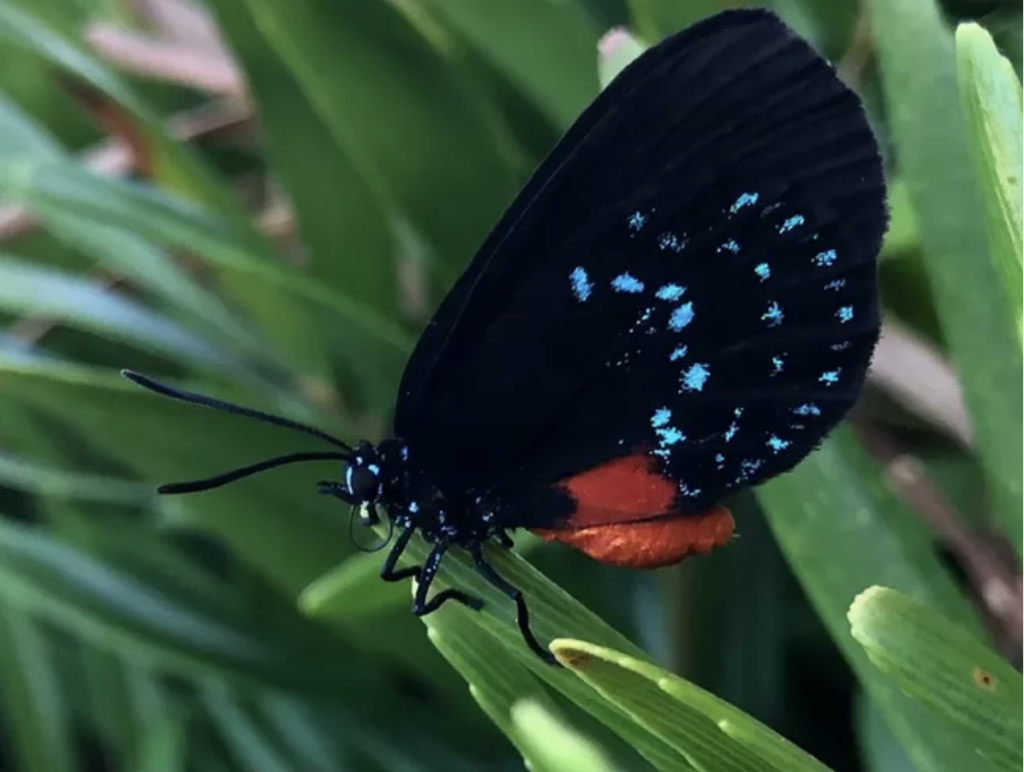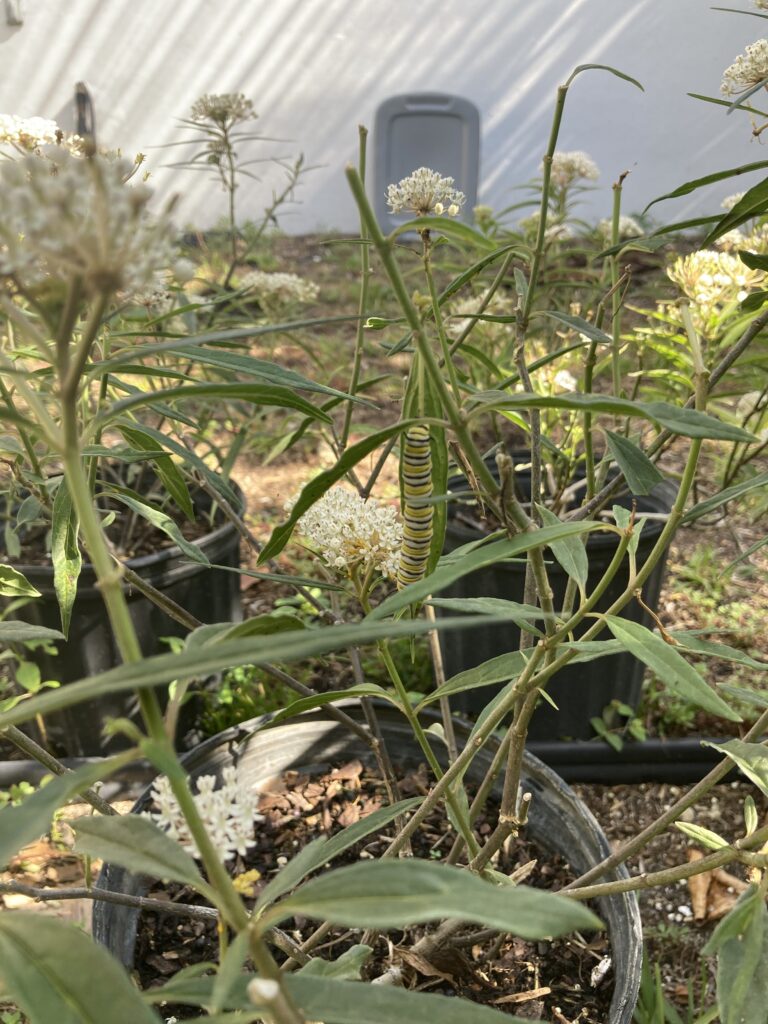
The incredible practice of horticultural therapy combines my love for South Florida’s unique flora with the power of healing, so if you’re ready to explore some of my favorite native plants, read on!
South Florida’s Native Plants to Consider for therapeutic garden spaces and sessions:
- Coontie (Zamia integrifolia): This low-maintenance plant is perfect for container gardens and requires little water. The Florida Coontie is also the host plant for the Atala butterfly, making it an essential addition to any native garden. First peoples in South Florida made an edible starch (known as Florida arrowroot) can be made from the Coontie root with proper preparation. Colonizers exploited this food source and over harvested the plant for this starch. The Atala butterfly disappeared along with Coontie and was thought to be extinct from 1937 until 1959 when scattered specimens were found. In 1979, the butterflies were discovered on a barrier island off the coast of Miami. The species is believed to have rebounded from this population. Oddly the Atala is not federally listed under the Endangered Species Act. Florida lists it as a “species of greatest conservation need.” Although rare, the Atala has rebounded considerably and has even moved beyond its historic range along the southeastern coast of Florida to localized areas near Florida’s west coast.
- Firebush (Hamelia patens): The firebush is a favorite among pollinators like hummingbirds and butterflies. Its vibrant red-orange flowers bloom year-round, providing a pop of color to your garden.
- Swamp Milkweed (Asclepias perennis): This native shrub produces clusters of stunning small pink and white flowers attracting various butterflies for pollination. The Monarch butterfly uses it as a host plant for eggs and a food source for larva. It’s a great choice for supporting local ecosystems as it needs little water and minimal care, thriving in wet or dry sandy areas.
- Saw palmetto (Serenoa repens): This slow-growing, hardy palm is perfect for South Florida gardens. Its fan-shaped leaves provide a beautiful, tropical touch, and it’s an essential host plant for the native palmetto skipper butterfly.
- Blanketflower (Gaillardia pulchella) is an herbaceous wildflower whose brightly colored flowers attract a variety of pollinators. The plant typically blooms from spring into fall, but may bloom year-round. A great ground cover or can be grown in a container.
- Wild coffee (Psychotria nervosa): This shade-tolerant plant is an excellent option for filling in those darker corners of your garden. With glossy leaves and small, fragrant flowers, wild coffee is a low-maintenance choice that supports pollinators, especially the Atala and Schaus’ swallowtail butterflies.



